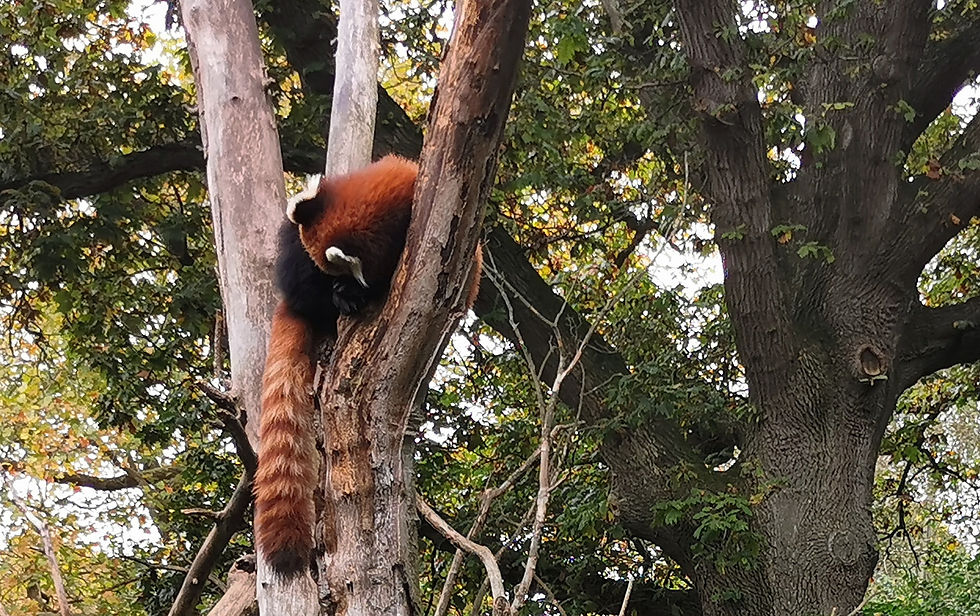When Dublin Zoo sent out a call for funding in November 2020 during one of the lockdowns I was quick to contribute by adopting an elephant called Aisha. When the zoo reopened I went to see how she was doing.

Covid restrictions meant I had to book a day and a time to visit, but I chose wisely and on a relatively mild November morning I set off arriving just as many of the animals were having breakfast or out of their houses as the keepers were doing the daily clean.

First stop was the elephants who live in an environment that resembles their natural habitat. Sadly Asian elephant populations have halved in the past 75 years due to habitat loss and poaching. Dublin Zoo has successfully bred elephants and works with the Asian Nature Conservation Foundation around the Kaziranga National Park in India to develop a wildlife corridor to link up a fragmented elephant habitat.

The treatment of elephants in zoos has changed considerably over the years. I remember as a child the elephants giving rides to visitors when I visited London Zoo, but thankfully this practice was halted in the 1960s. I am delighted to say that Aisha and the herd at Dublin Zoo are flourishing. I haven’t adopted her again as I’ve become rather fascinated with the okapis.

These mild mannered creatures are not related to zebras, but to giraffes and Dublin Zoo has had success in breeding them, being part of the European breeding programme. With only about 10,000 to 35,000 remaining in the wild, they are hunted for their meat and their skin. Like myself they are solitary animals and scientists did not know they existed until 1901. Last week I adopted an okapi.

The Red River Hogs did not care to venture out into the November air, preferring to remain inside to feast on the hay, but the painted dogs were very active, chasing each other around their compound.

Threatened by disease from domestic dogs there are only about 3000 to 5000 left in the wild. Dublin Zoo is part of the European breeding programme and funded a water supply for a unit in Zimbabwe that helps injured painted dogs recover and raises orphaned pups.

Another of my favourite animals in the zoo are the red pandas. Native to the Himalayas and the mountains of China and Burma, they too are solitary animals, and are most active at dawn and dusk.

At noon they were sleeping, not even interested in their diet of bamboo. I can equate with that. If I have a choice between sleep and food, sleep wins out every time!
The Abyssinian Ground Hornbill however was most interested in the food he had been given carrying a mouse away to his house for later consumption. He didn’t seem to want to watch me consume the white rodent, although he was quite happy to tuck into the fresh fruit and vegetables he had been given.

To limit the poaching of these birds Dublin Zoo send the feathers to Burkina Faso for use in ornamental masks and once again the zoo is part of the European zoo breeding programme for these birds.

Having seen the hornbill eat his fill, I decided it was time for a coffee in one of the cafés situated around the zoo. I had much more to see, but did as advised by one of the signs and sat outside allowing my senses to appreciate the wonders of nature around me. The zoo certainly gives everyone a chance to view the variety of fauna and flora the world has to offer and I will leave you to savour some of the photographs whilst I make myself a coffee before writing a continuation of my visit to Dublin Zoo.
***
Catch up with my other blogs of Dublin Zoo via these links:

Comments